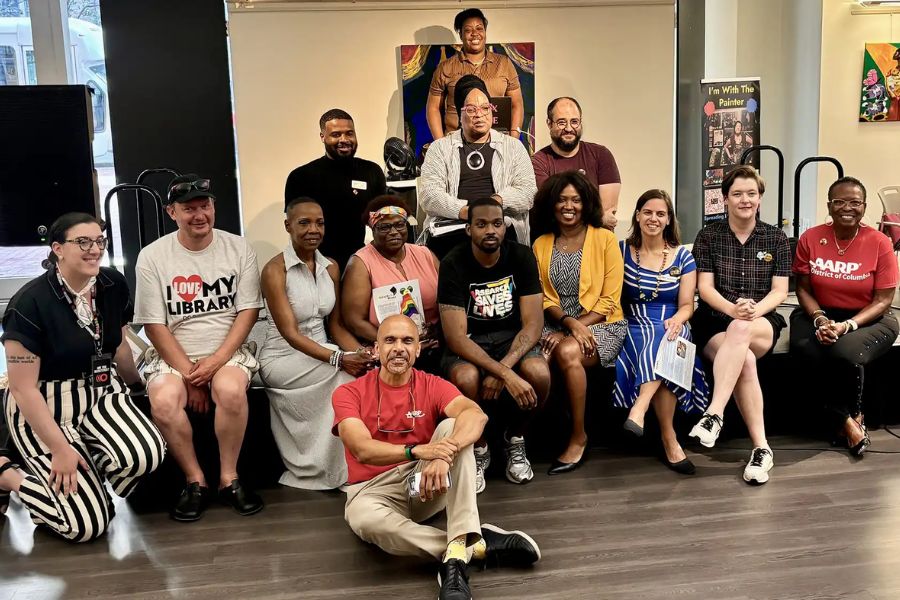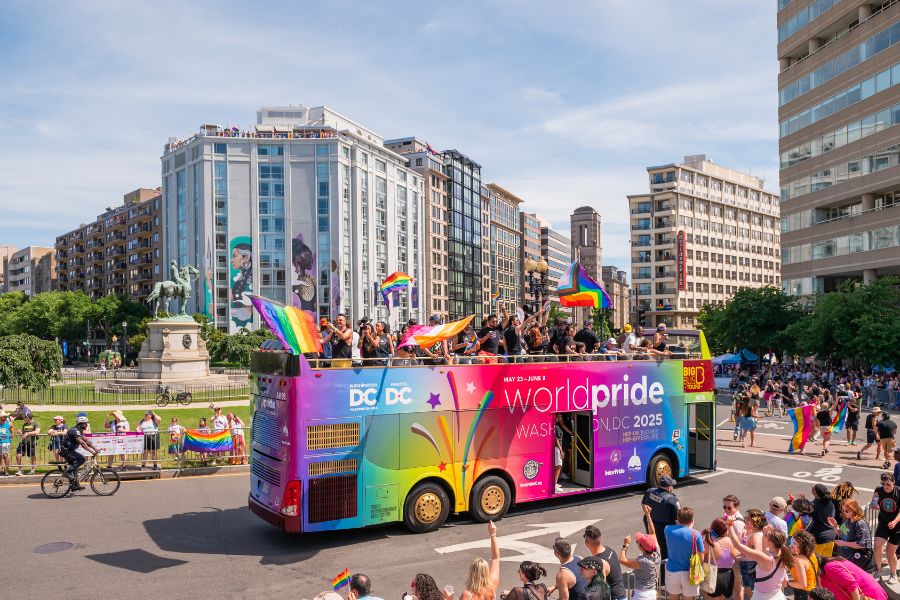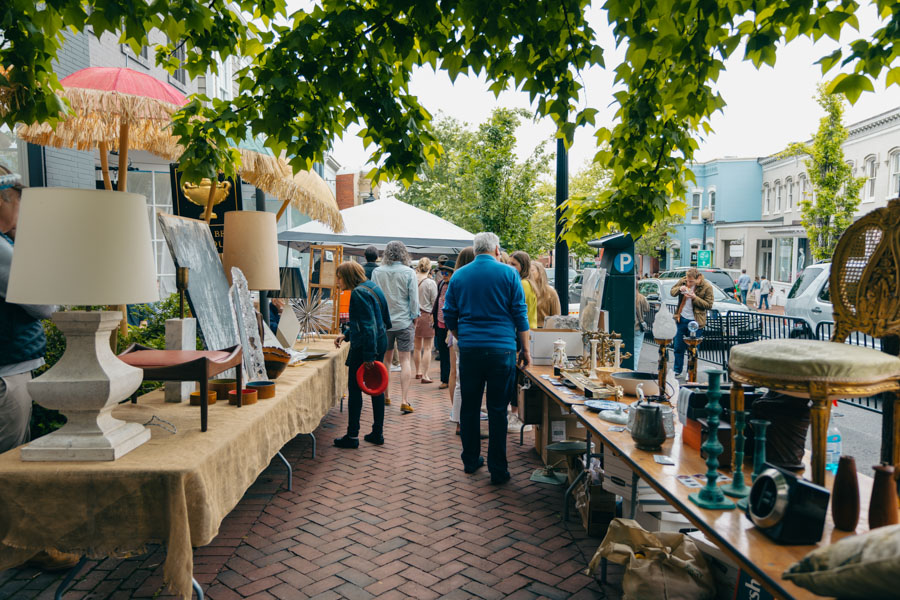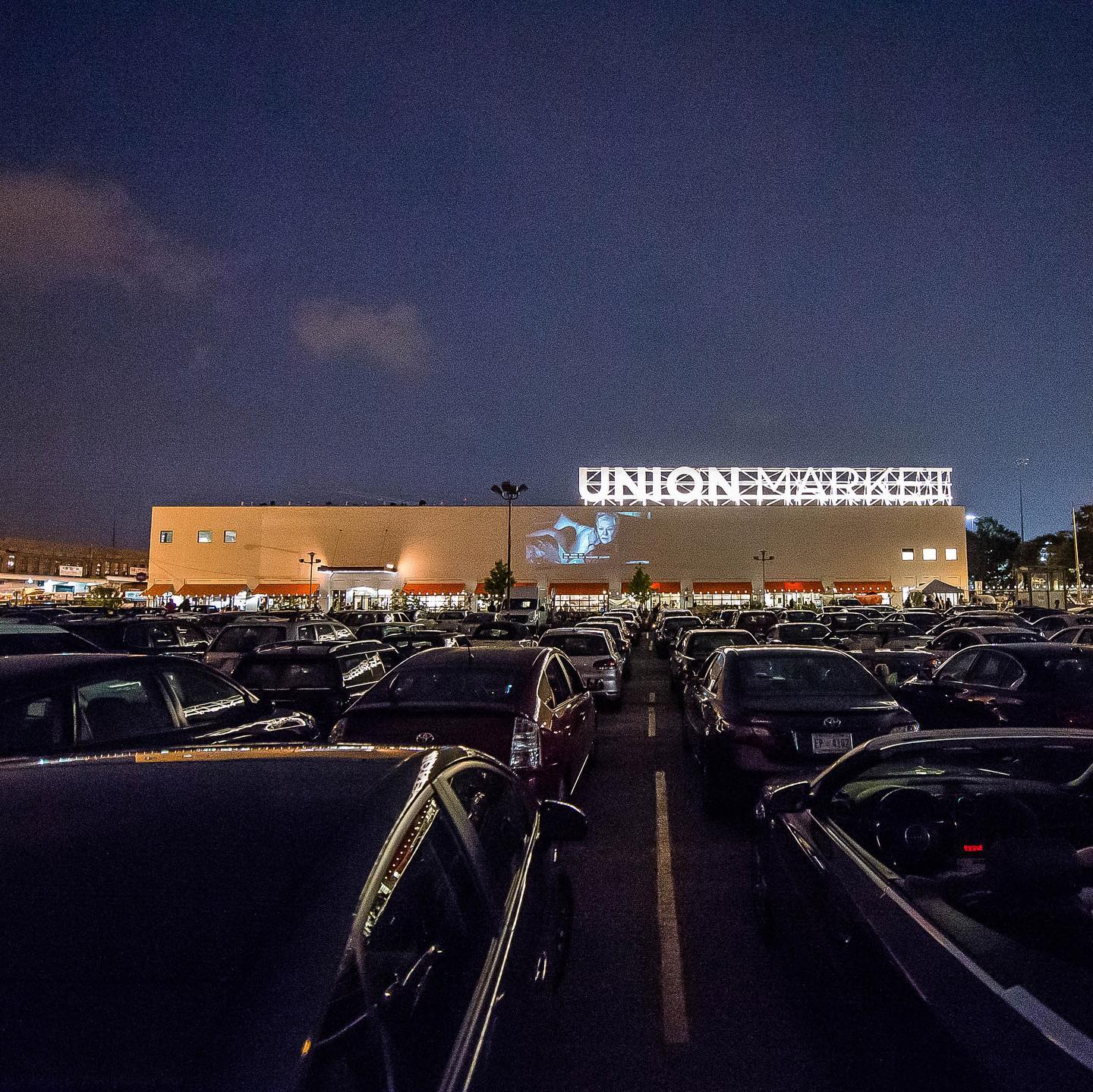
Alexandria VA Home Selling Trends

Alexandria VA Home Selling Trends

Photo by AndreyPopov from Getty Images via Canva.com
In this article:
- High Home Values and Housing Inventory Shortage
- Buyers Demand Move-In Ready Homes
- Reactions to Amazon’s Expansion
- The Effect of Back-to-Work Mandates
Traditionally, the real estate markets in the City of Alexandria and Alexandria, Fairfax County, have a lot going for them thanks to ideal locations and a variety of high-quality-of-life factors. So, the cities’ selling trends don’t dip too low even when the other markets experience downturns. Higher interest rates may have somewhat slowed some of the selling action lately, but if the house is priced right, multiple buyers will submit more than reasonable offers.
Today’s higher interest rates give some buyers pause when searching for Alexandria properties. But the hesitation is curtailed by a pool of other buyers impatiently waiting for more housing inventory to open so they can swoop in and become homeowners in a lucrative market.
If you’re interested in selling your home in Alexandria, VA, soon, keep an eye on these trends, in addition to other traditional indicators of a strong seller’s market.
1. High Home Values and the Housing Inventory Shortage Remains
Northern Virginia is known for the rapid real estate pace it maintains, while Alexandria home values have stayed the same or risen in recent years, shrinking buyers’ purchasing power.
On the other hand, many sellers continue to enjoy multiple offers, their choice of settlement dates, and a myriad of niceties. The increased buyer competition also encourages bidding wars and all-cash offers for competitively priced homes.
2. High Prices Mean Buyers Demand Move-In Ready Homes
Although sellers are sitting pretty in Alexandria, they must know that buyers are fatigued, especially after higher interest rates put some buyers on ice. Buyers have been diligently watching and waiting for conveniently located homes with a sale price that they’re approved to purchase.
They’re ready to buy, but want the extras that come with the label “move-in ready.” Buyers may worry that, though they can afford a mortgage on a home, after closing, they’ll be tapped financially and won’t have the cash to carry out improvements. Military sellers should consider thoroughly preparing and staging to show buyers move-in-ready potential.
Are you headed to Alexandria? This newcomer’s guide has information to make the transition easier.

Photo by Gerville from Getty Images Signature via Canva.com
3. Surprising Reactions to Amazon’s Expansion
When the news of Amazon’s H2Q burst on the scene five years ago, the Alexandria housing market responded with a mixed collection of activity. Home sellers waited with bated breath for unlimited and lucrative offers to come their way. Some homeowners took advantage of the initial interest, but others stayed and watched.
National Landing’s (Amazon’s rebranded name for the northern part of the City of Alexandria) effect on Alexandria and Arlington remains strong, with accompanying high sale prices thanks to the convenient location and low inventory of most housing, especially single-family homes.
However, Amazon’s effect was far less impactful than once expected. For example, Bright MLS’s Amazon Market Report says that the median sales price was $650,000 in 2019. In 2023, it remained $650,000.
The area still attracts home buyers with financing ready to go, especially after Virginia Tech’s Innovation Campus opened nearby in 2024. Although Amazon put the brakes on its second development phase, the company still expects to have 25,000 new employees in place by 2030.
Searching for homes in Alexandria and Arlington? Here’s how to choose.
4. The Effect of Back-to-Work Mandates
Although Alexandria isn’t in the same zip code as Washington, DC, many government decisions directly affect Alexandria’s real estate market, including augmented buying and selling trends dictated by back-to-work mandates from government offices and private business entities.
It remains to be seen if a shrinking federal workforce and a mandated in-person labor pool will dramatically affect Alexandria’s real estate market. If homeowners can no longer afford pricey mortgages typical of the area, they may be forced to sell. And those who bought more affordable homes further away, thinking remote work was here to stay, could be second-guessing their difficult commutes.
Well-positioned buyers sidelined by low inventory may have slight advantages if the seller is desperate to move. However, a priced-right home in Alexandria continues to attract multiple offers, many in cash.
As you can see, all of these real estate trends benefit sellers who are considering selling soon. However, experienced real estate agents will give pause to an owner diving into the marketplace without first understanding their neighborhood’s specific details. Comparable homes rule the marketplace, and sellers should seek professional advice as to when to sell and for how much.
Bourbon-Peach Icebox Cake

Bourbon-Peach Icebox Cake
This refreshing no-bake dessert layers buttery cookies, sweet peach jam, and tangy crème fraîche for a creamy, summery treat.
Inside the Secret World of Luxury Real Estate in DC
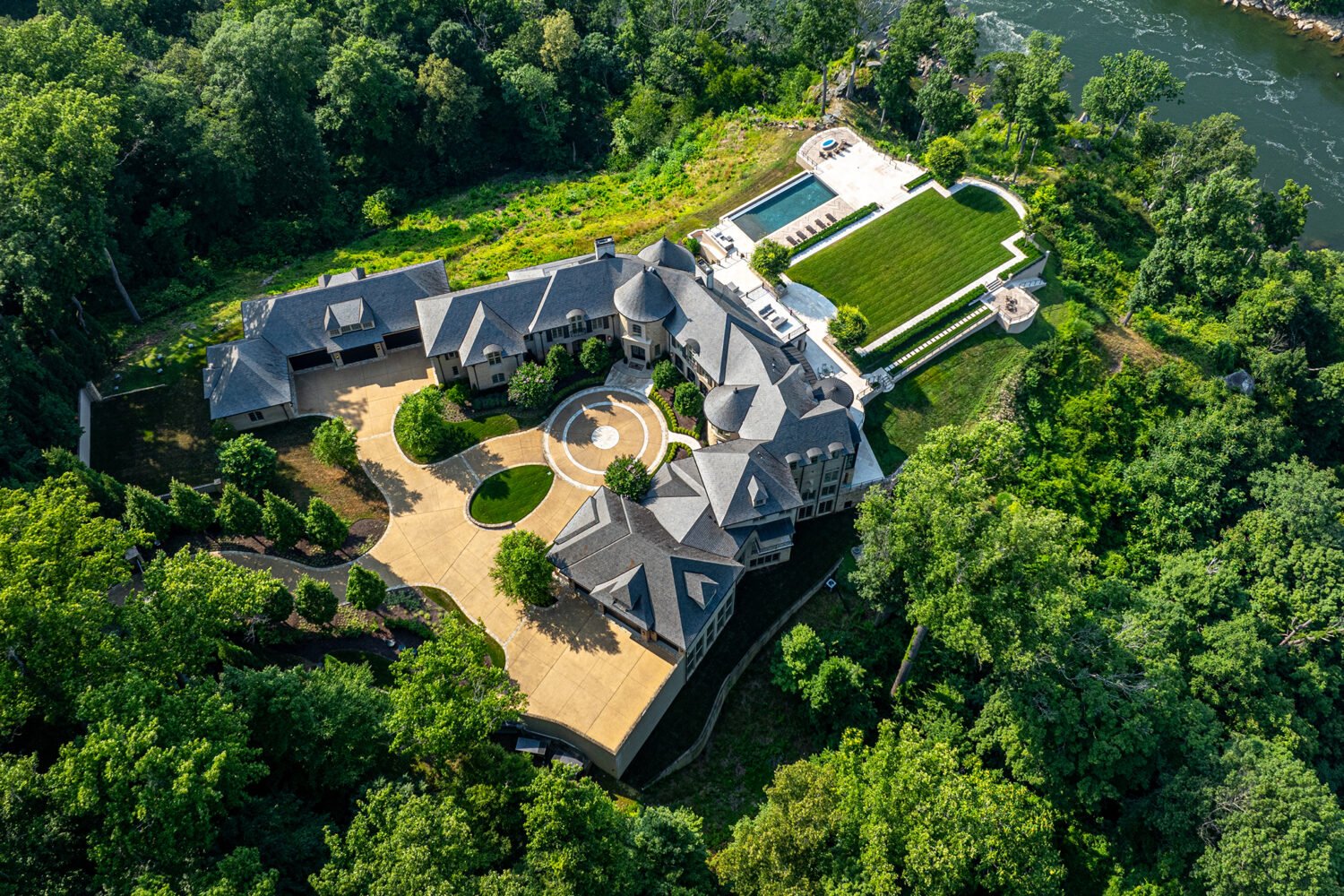
Inside the Secret World of Luxury Real Estate in DC
NDAs, private listings, LLCs, security teams. Power brokers and high rollers in DC have countless ways of shielding their properties from prying eyes—or threats far worse. Here’s how the elites create a layer of privacy around their homes.
A pocket listing, as such a listing is often also called, might go up for sale without any public notice, and it might go under contract and sell just as quietly, the buyer’s identity shielded by an LLC or trust. A seller might not command the highest possible sales price with a private listing, but a more important consideration might be discretion—no open houses, no nosy neighbors, no public glimpse of the inner workings of their Washington life.
DC has always been a city where discretion and privacy are a cherished—and necessary—commodity. Pocket listings have a long history here. But the need for privacy has only seemed to grow more pressing. We live in an age of drones and smartphones, of TMZ and influencers looking to score a scoop. Maybe you want to shield the intimate details of your life, and that of your family, from prying eyes. Maybe you’re a professional athlete worried about a burglar targeting your house on game day or a politician worried about death threats. With the arrival of all the attendant billionaires and tech gurus during the second Trump administration, the luxury real-estate market has witnessed a surge in activity—the so-called Trump bump—which has helped spotlight the existence of this shadow submarket, where untold millions in deals might be shrouded in relative secrecy.
How can you create a zone of privacy around where you live? The question might apply equally to a victim of domestic violence; a journalist who worries about being doxxed; a CIA agent or therapist; a judge targeted during a RICO case; or someone who, for whatever reason, prioritizes anonymity. And it might apply not just to the sale of a property but to the renovation or construction of a new house, or to the design of a safe room (a.k.a. a panic room) or other security plan.
The vast majority of us will remain blissfully ignorant of these concerns. We’ll never ask an agent or architect to sign a nondisclosure agreement (see below for more on the rise of the real estate NDA). And we’ll list our properties in the MLS, as Hryniewicki almost always suggests, even to his luxury sellers. But in select instances, for a select individual, only a pocket listing will do.
Deep Private

There are pocket listings and then there are highly secretive ones. “We call it deep private,” says Hryniewicki, referring to a private listing with no public information at all: no photos, no address, no sign outside. The only people who know about the listing are the seller, the agency, and anyone the agency contacts.
Jim Bell, an executive vice president of TTR Sotheby’s International Realty, describes it this way: “Almost a complete communications and media blackout. The people you’re communicating with are on a need-to-know basis. And no social media.” The appeal of these listings can be their exclusivity, says Bell: “Privacy and discretion create value, because they’re limited—very limited—commodities.”
With a deep pocket listing, making a sale relies on the networking of agents who traffic in these exclusive circles. “We’re constantly texting with each other trying to match these private clients with the private listings,” says Bell. “It’s not just the person and the property—to make it all come together, you have to have the person get into the property.”
In this ultra-luxe bracket, the logistics require a certain finesse. How do you get someone who might be busy running a hedge fund or multinational company in another state into the house during their one available window that month? An ill-timed snowstorm can blow up a deal. Or a buyer might suddenly emerge the night before. “We might get notice at 9:30 pm that the buyer is available at 8 am to show,” says Hryniewicki. “They want to see the house at 8 am because nobody’s on the streets. It’s sometimes awkward timing, but that’s on purpose: to create a level of privacy.”
In some cases, an agent showing a property might request that the wi-fi be turned off to prevent a Nest doorbell or security camera from recording the potential buyers. That level of discretion can extend to financial disclosures. “Sometimes we get letters from bankers saying, ‘Hey, we’re not going to disclose who this individual is, but this LLC has access to so many million in liquid assets,’ ” one agent told us. Typically, the two parties in a transaction know who’s on the other side of the table, but there are exceptions. In 2023, Jeff Bezos purchased a house in Indian Creek Island—Florida’s so-called Billionaire’s Bunker—for $79 million, after the seller, businessman Leo Kryss, agreed to chop $6 million off the asking price. Kryss sued—the case was ongoing at press time—claiming he never would have agreed to the reduction had he known that the buyer was Bezos. And that the brokerage, which represented both him and the Amazon founder, had misled him about the buyer’s identity.
Last August, Bright MLS clarified the rules around pocket listings. Before, private was assumed to mean private. If an agent advertised a property publicly, they posted it online in the MLS. Now they can list privately (keeping the address under wraps, say) but also pursue a marketing campaign—for example, placing a story in the Wall Street Journal that targets a jet-setting buyer pool. Following the update, many agents have launched a section on their websites featuring pocket listings, including TTR Sotheby’s Daniel Heider, whose Heider Private offers up varying levels of detail for available properties—maybe an address and list price, or maybe just a general location and description. “I read the top sales of the year by various outlets,” says Heider, only to discover they’re missing some of the biggest transactions. “If you’re really in touch with what’s happening, you’re not just looking at the public market. You’re looking at the private market.”
Consider the following transactions. An eight-bedroom mansion on Woodland Drive, across from Peter Thiel’s DC house, sold in early January for $17.5 million. The deed recorded the buyer as Normanstone Holdings LLC, which had been incorporated in Delaware in December. And in early March, another private listing in the neighborhood closed for $23 million, this one purchased by Redbrick Corner, also an LLC registered in Delaware. The second property was blurred out on Google maps—something any homeowner can request. Brief stories appeared in the Washington Business Journal about each sale, but that was mostly it—two of the largest transactions of the year, unfolding not with a bang but a whimper, just as the buyers had intended.
Safe Space
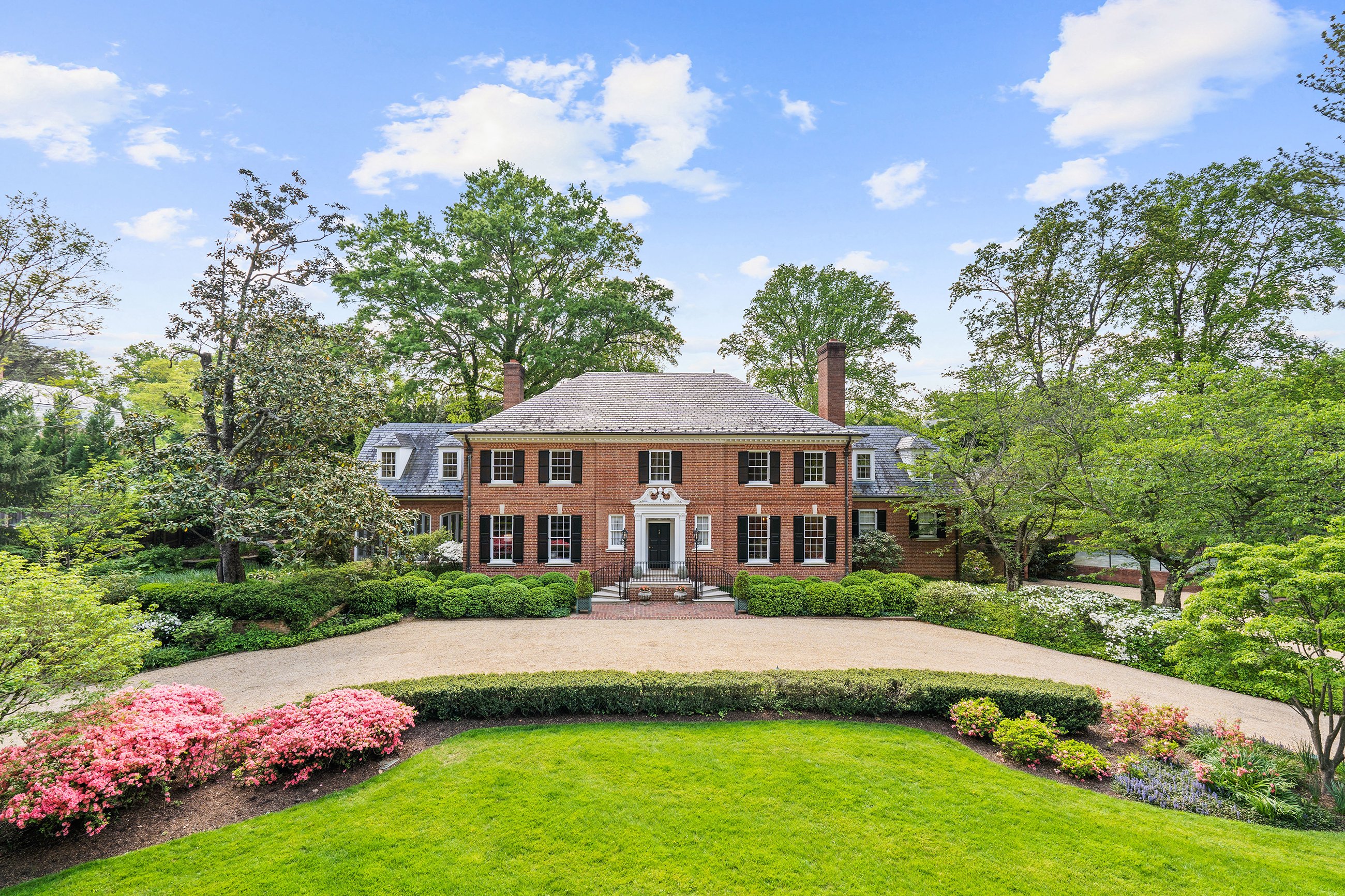
Closing a deal is one thing. But the question of privacy extends to the estate itself. Maybe the property already has a secluded feel, a security plan in place. Maybe it needs an upgrade. “When Steve Mnuchin was looking for houses during Trump [term] one, when he got confirmed to be Treasury Secretary, his main criterion was ‘I want a gated property,’ ” recalls Hryniewicki, whose firm helped Mnuchin land a $12.6 million walled estate in Massachusetts Avenue Heights. But for many luxe listings in the city, especially in Georgetown or Kalorama, little separates the front door from the street. Kalorama appeals to some buyers in part because of the concentration of high-profile people there, such as the Obamas: The Secret Service already has a presence in the neighborhood.
In some cases, clients are motivated more by privacy than security. DC landscape architect Richard Arentz is now finishing work on a garden in Georgetown where he had only about three feet of space along the edge to create a privacy screen. He planted 18-foot-tall magnolia virginiana Moonglows that will, over time, form an impenetrable shield. For clients wanting immediate cover, Arentz favors hollies—American hollies in shaded areas, Nellie Stevens hollies in full sun—to create what he calls “a dense-edge condition.” For those with the deepest pockets—the Bezoses of the world—the solution may be more definitive: Buy the adjoining property.
And for those with a private security or Secret Service detail, the designer may need to factor in a security plan. Considerations might include “access to the property, how we can control that access, what types of physical barriers can be put in place, what kinds of sensors, whether they are sound or motion,” says Joseph Richardson, a DC landscape architect. High-tech cameras can differentiate between a deer and a human, adds Tim Miller, CEO of the Gaithersburg security company Advanosys Security & Automation Technologies, and can alert an owner via text if a particular type of car pulls into the driveway—a black Mercedes, say. The security team might request that certain sightlines on the property be kept clear, possibly requiring regular pruning of trees or other plants, or adjusting the design to respect those corridors. “The protection and the privacy of the client is of the utmost importance, but they’re also coming to environments where they want to be able to relax and enjoy it with their friends and families,” says Richardson. “So they also don’t want it to feel like it’s a fortress.”
Security fencing can be swapped out for something more ornate or architecturally inspired if a perimeter detection system is in place, says Miller, who’s been in the business four decades and has done work for various embassies, government and corporate clients such as the US Coast Guard, and private individuals. For one of his projects, Miller says a client wanted a pair of ornate French entry doors outfitted with bulletproof glass. He found a manufacturer in Lithuania who created an exact replica of the door with the requisite glass, painted the molding with gold leaf, and on either side of the door added a long section of Kevlar ballistic material behind the drywall, safeguarding the entrance.
Which brings us to the safe room, or as some call it, the panic room. According to a recent report by the market-research company Valuates, safe rooms will be a billion-dollar industry globally by 2030. And while that includes the commercial and government sectors, the safe room has trickled into the residential mainstream—even some middle-class families are adding one to their homes. Ellen Hatton, a principal at BarnesVanze Architects, rattles off the features of the typical one, a place where the homeowners can retreat in case of an imminent threat: “Steel doors. Ballistic walls. If there’s a window, a ballistic window. Separate mechanical systems.”
Designing a safe room requires balancing a few key factors: the severity of the threat, the homeowner’s budget, and the house’s layout, says Miller. Essentials include a battery backup and generator, an “intrusion-duress activation system,” and most important, a secure connection to the monitoring station. Wealthy clients facing a credible threat might have multiple such rooms, Miller says, and store valuable possessions there, such as a collection of Rolexes. Most common, Miller says, is to fashion one in a room or closet off the bedroom. One of Miller’s clients transformed an entire primary suite into a safe room—which would surprise anyone standing in the space, because the design’s artful execution makes it all but invisible.
Gossip Pages
And yet for all the effort devoted to veiling a property under a shroud of privacy and security, word often leaks. “I’ve closed deals, even recently, that, before our deed was submitted for recording, the information was out,” says Rob Rothstein, president of Paragon Title. Maybe the neighbors, or someone on the far fringes of the deal who hadn’t signed an NDA, blabbed. Perhaps a journalist got tipped off by a source. An entire media ecosystem is dedicated to reporting on the estates of the rich and famous.
“The only thing we can’t control is public record,” says Michael Patrick, a principal at BarnesVanze. A few years back, when the firm transformed the old Textile Museum in Kalorama into Bezos’s house, an enterprising writer from this magazine went to the city, pulled the permit drawings, and published them. But unless you’ve attended a soiree at the house, or studied the Instagram of Lauren Sánchez, Bezos’s fiancée, for clues, the interior remains a mystery. “You have these large gaps in your résumé and it’s like, what have you guys been doing?” says Wayne Adams, a principal at BarnesVanze. “Our most spectacular projects are never going to be shared.
Inside a Luxury Estate
How privacy, security, and luxe trappings (cigar lounge, anyone?) come together in one swank space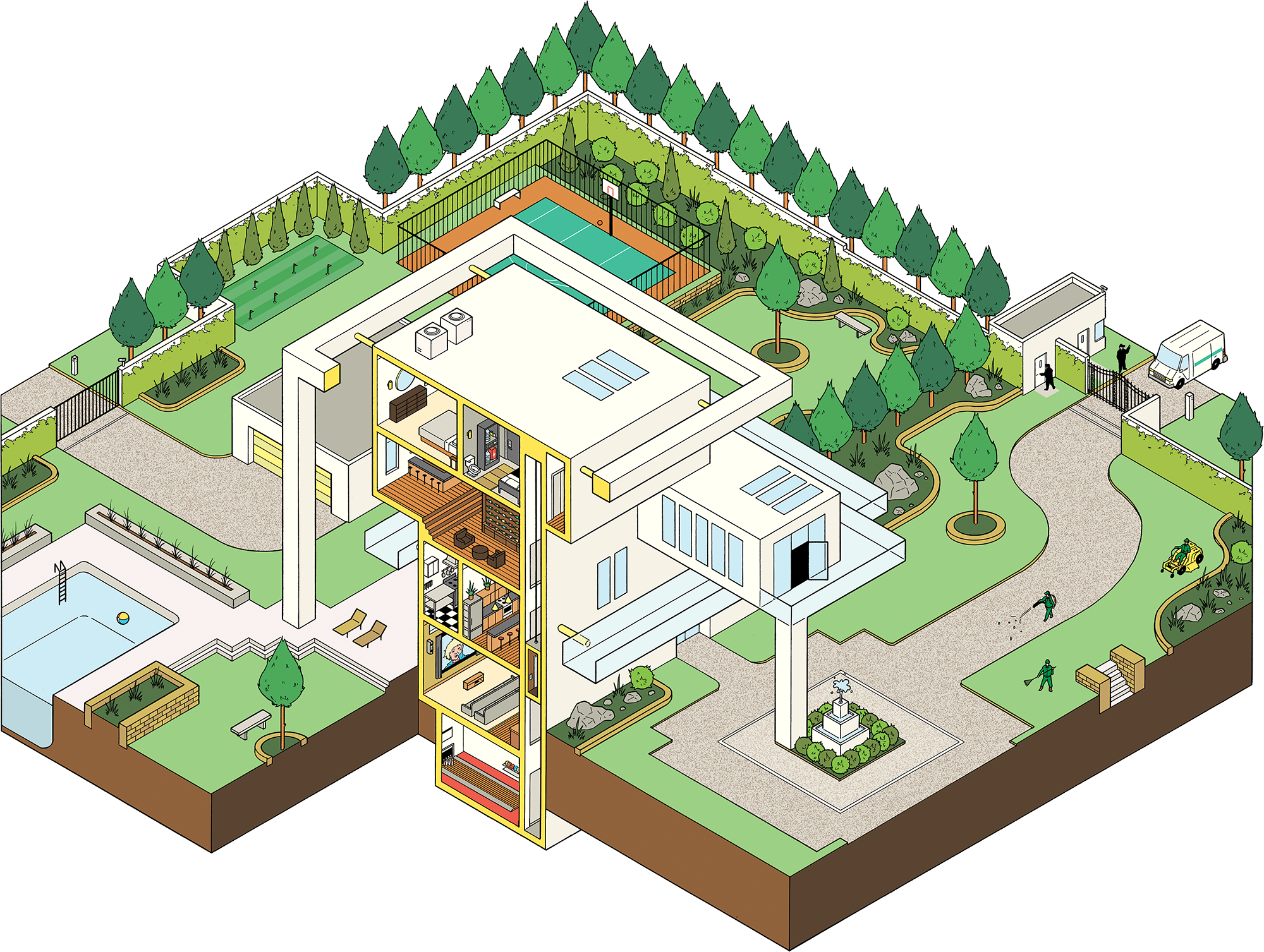
Illustration by Kyle Ellingson.
The Rise of the NDA

The nondisclosure agreement–or NDA–is, as New York magazine recently dubbed it, the defining legal document of our time. And signing one has become more common in real estate and home construction, too, whether you’re an agent, an interior designer, or a builder. Sometimes blanket NDA language prohibiting photographs or the sharing of information needs to be tweaked–after all, if you’re an architect, how can you generate a proposal without snapping a few pics of the site and discussing the specifics with other members of the design team? But for most professionals working in these rarefied circles, discretion is already a core principle of their business. “You’re engaging with folks in intimate settings, in their personal homes,” says landscape architect Joseph Richardson. “Once you get a reputation for not maintaining your clients’ privacy, it’s a death sentence.”
It may not just be the real estate agent or designer signing an NDA but everyone involved with a house sale or a project–the mason, electrician, termite inspector, closing attorney. On a construction site, as a house nears completion, a no-phone rule might be imposed to prevent pictures. And after the project is completed, the client may request that a firm destroy all relevant photographs and files. When it’s still working on the drawings, the DC firm BarnesVanze Architects will label them using the client’s LLC, if there is one, and keep any labels or details to a minimum. Even in the privacy of its office, the firm will refer to a project using the LLC name–an added safeguard that ensures discretion.
LLCs and the Art of Closing
Rob Rothstein, the president of Paragon Title, has helped many people over the years create secrecy around their purchase of a property. “It’s been high-net-worth individuals,” he says, though that’s not all. “It’s been business owners, doctors, government officials, journalists, CIA agents, victims of domestic abuse or stalking.”
Typically, clients use an LLC or trust to record the sale. But recently, he’s been advising certain individuals to reconsider an LLC, or limited-liability corporation, which does in fact provide liability protection but may not always guarantee a buyer anonymity.
Creating an LLC requires making state filings that can be easily accessible online, and a small misstep on the paperwork can help reveal someone’s identity–for example, if they use an address that can be linked to another company with a known individual behind it. A trust, on the other hand, is a private agreement that isn’t publicly recorded. Another privacy tactic: an all-cash purchase, meaning no loan documents need to be signed.
Because of money laundering and other illicit concerns, the federal government has started giving all-cash sales more scrutiny. Since 2022, the Financial Crimes Enforcement Network (FinCEN), which is part of the US Treasury, has issued a series of Geographic Targeting Orders requiring title-insurance companies to report all transactions over $300,000 in DC and most of the surrounding counties in Maryland and Virginia–if the property is purchased by a business entity without financing–and share the identity of the primary individual behind that entity.
One thing every transaction has in common is that a deed of sale must be filed with the local municipality that makes public the individual, LLC, or trust that purchased the property. Rothstein knows of only one exception: Maryland offers a Safe at Home Address Confidentiality Program for victims of domestic violence or human trafficking, or for a parent or guardian who fears for the safety of a child or disabled person. If those individuals demonstrate a credible threat, the state will shield access to their property records.
Prime location with Port Royal perks
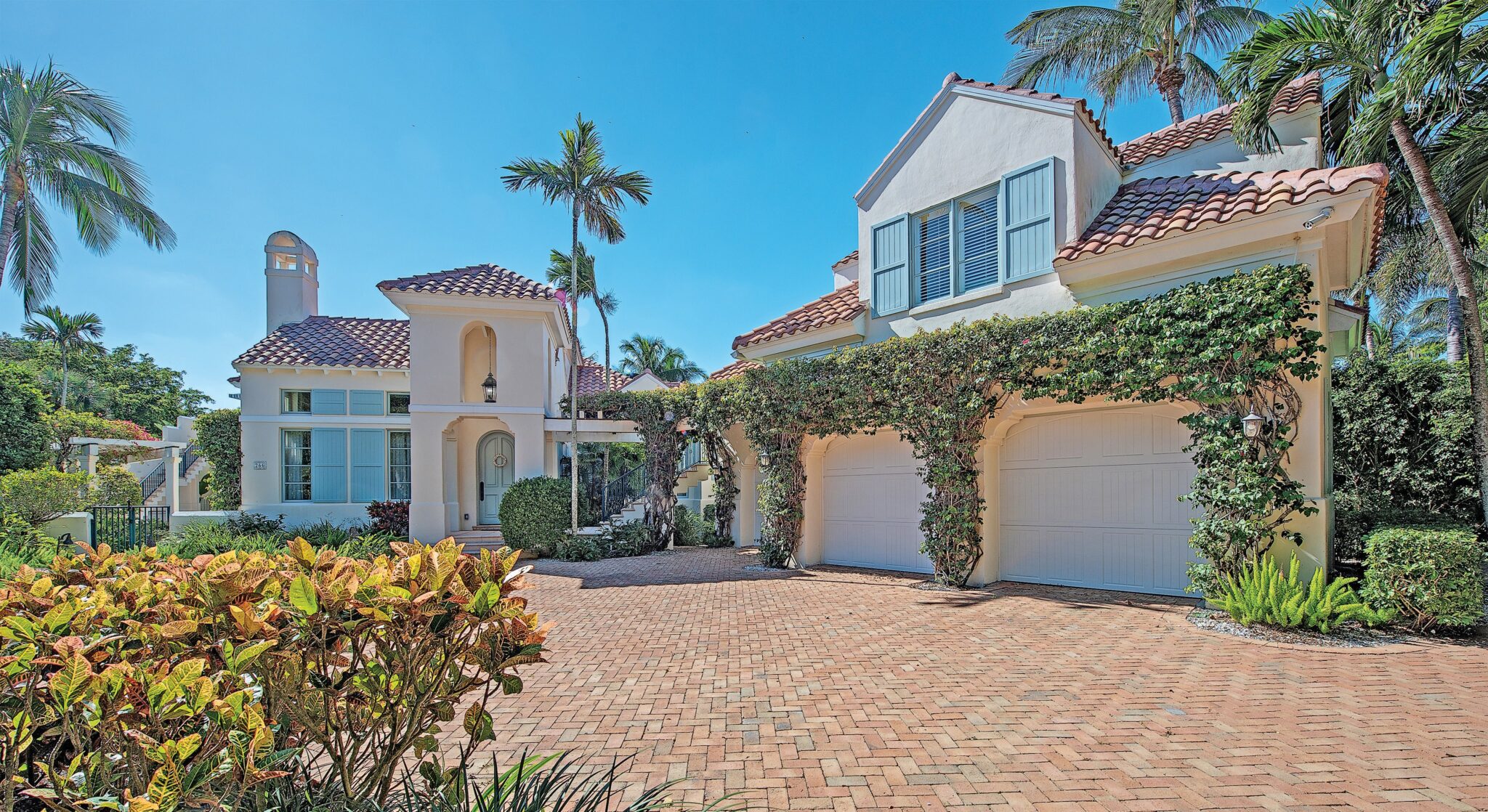
Prime location with Port Royal perks
Tucked within the exclusive gated enclave of Little Harbour, a private community of just 32 single-family homes on over 25 acres, 266 Little Harbour enjoys a premier location along the prestigious Gordon Drive peninsula with direct, bridge-free access to the Gulf.
This exceptional residence offers a private dock with a rare, covered boathouse and 5,100 square feet of thoughtfully designed living space. Reclaimed oak wood floors and refined finishes set a warm, luxurious tone throughout. The main living area opens directly to the pool and spa, creating the perfect setting for indoor-outdoor living and entertaining.
Additional features include three fireplaces, caretaker’s quarters, a cabana with full bath, soaring volume ceilings and an elevator. The beach is just across the street, and dining and shopping are within easy walking distance. This property also includes immediate eligibility for membership to the Port Royal Club, one of Naples’ most prestigious private clubs.
The property, at 266 Little Harbour Lane, is available for a listing price of $9,900,000. To schedule a showing or to find out more information, contact William Raveis Real Estate agent Frank Sajtar at 239-776-8382, via email at Frank.Sajtar@ Raveis.com or via the web at FrankSajtar.com. ¦
— Although the information about the homes featured here is as current as possible, a property might be off the market by press time.
Multigenerational Homes: Multigenerational Living is Back


The concept of multiple generations living in the same house is nothing new.
Multigenerational households declined in popularity after World War II, but they’re on the rise again in a big way.
According to the Pew Research Center, approximately 51 million Americans (or 16.7 percent of the population) live in a house with at least two adult generations, or a grandparent and at least one other generation. Pew also reported a 10.5 percent increase in multigenerational households from 2007 to 2009.
One driver of this trend is changing demographics. While one would normally expect baby boomers to be downsizing at this stage of their lives, quite a few are actually trading up. Boomers are sometimes referred to as “the Sandwich Generation” because they have children still living at home as well as elderly parents.
Second, the recession triggered a wave of so-called “boomerang kids” moving back in with their parents because they couldn’t support themselves financially. There’s also the surge in immigration that started around 1970, dominated by Asians and those from Latin America, who are much more inclined than native-born Americans to live in multigenerational households.
For economic as well as psychological reasons, many boomers don’t want to put Grandma and Grandpa in an assisted-living facility or nursing home. Instead, they’re purchasing new homes where everyone can spend quality time together as a family as well as have independence and privacy.
Multigenerational Housing
In response to the growing number of boomers taking care of elderly relatives in their homes, many builders have made the first-floor bedroom suite a standard feature, says Joan Marcus-Colvin, senior vice president of sales and marketing for The New Home Company (TNHC), Aliso Viejo, Calif.
But homes geared specifically to multigenerational buyers are on the cutting edge of design. They often include self-contained, apartment-like living areas with a bedroom, a full bath, a kitchenette, a separate entrance and sometimes a laundry room and garage. Although the western states, especially California, are ahead of the curve, these multigenerational floorplans are gradually making their way east.
Based on extensive consumer research, TNHC and Robert Hidey Architects of Irvine, Calif., developed floor plans for Irvine’s Lambert Ranch. The community features large single-family homes with various options for extended families, including 800-sq.-ft., detached guest houses; “living suites” with kitchenettes and separate entrances and compound-like estates with shared courtyards.
“We have this multifaceted approach to multigenerational because we figured not everyone’s going to have the same family these days,” says Marcus-Colvin. “We learned that the most successful solution was the detached guest house. It’s in such close proximity to the main house that [although it offers] privacy, it’s very connected.”
One couple that purchased at Lambert Ranch had married later in life. Each spouse had three children from a previous marriage. “They took the maximum number of bedrooms in the guest house so the two returning college kids could live there, and the younger kids in the main house,” she says.
“In the majority of our floor plans, there was an option to convert one of the downstairs bedrooms to a lock-off suite,” says Jose Alkon, sales manager for Lambert Ranch. “We would add a door to the exterior from the bedroom to provide a private entrance, and there would also be a door to the main house so they could maintain that connection.”
In just over a year, all 169 homes at Lambert Ranch were sold, ranging from 2,730 to 4,876 sq. ft. and priced from the $900,000s to $1.5 million. TNHC is now selling multigenerational homes at Villa Metro in Santa Clarita, Calif. — since Villa Metro opened in August 2013, 34 of 60 homes have been sold.
A Home Within a Home
In 2011, Lennar Homes, a national builder headquartered in Miami, Fla., introduced its NextGen line of homes in Homes geared specifically to multigenerational buyers are on the cutting edge of design in Arizona, California and Nevada. The homes include a “lock-off suite” that is, as the company advertises, “a home within a home” — bedroom, full bath, kitchenette, living room, laundry room and separate entrance. Some plans also include a private one-car garage.
The NextGen homes are so popular they’re now offered in 130 communities across the United States, including Florida, Minnesota and New Jersey. Sale prices range from the low $200,000s to $600,000 for 2,000 to 4,000 sq. ft., depending on the community and geographic location.
Jeff Roos, president of Lennar’s West Region, estimates there could be as many as 75 different NextGen floor plans because the company is constantly tweaking existing plans and creating new ones. The one- and two-story homes are designed to fit a variety of lot sizes and there are also variations in the lock-off suites, which include studio, one-bedroom and two-bedroom options. The two-bedroom suites are ideal for a young divorced adult with a child. For the most part, though, it’s the grandparents who end up living in the lock-off suites.
“It’s an opportunity for people to live independently but together,” says Roos. “In the past, even if your home had dual master suites or a [lower-level] bedroom, everyone had to sit at the same kitchen table and on the same sofa.”
With NextGen, you’re accessible to the rest of the people in the home, but you have your own area to cook and watch TV and hang out and do your laundry and come and go as you please. No more fighting over the remote or arguing about what to have for dinner.
Kitchen Versus Kitchenette
Lock-off suites within the walls of a single-family home typically have a kitchenette or service bar with a sink, a refrigerator and a convection microwave oven, but not a range and oven. That’s because some municipalities classify a home as a duplex if the kitchenette has full-size cooking appliances. Lennar’s NextGen homes circumvent such zoning because they run on a single electric meter and, from the outside, they look like other houses.
Lennar and other builders have found that the convection microwave is versatile enough for most types of cooking, not to mention dozens of countertop appliances, such as crockpots, woks and toaster ovens. A kitchenette, by design, is relatively small because it’s meant for one or two people. A range would take up space better utilized for storage cabinets. (Roos points out that for large gatherings, there’s always the main kitchen.)
Another Benefit: Shared Expenses
It stands to reason that, to accommodate more people under a single roof, the home will have to be bigger and, therefore, cost more. “There are some additional costs that go into it, such as the kitchenette and the extra [exterior] door,” says Lennar’s Roos.
However, here’s another way to look at it: if you rented a separate apartment for an aging parent or boomerang child, it could cost you $1,000 a month or more. Then there’s the cost of long-term care. According to a MetLife Mature Market Institute survey, in 2012, the average monthly base rate of an assisted-living facility was $35,550. The national average daily rate for a nursing home was $248 ($90,520 per year) while a semi-private room costs $222 ($81,030 per year).
Factor in the mortgage payment on a conventional home, plus the cost of an apartment, assisted-living facility or nursing home and it becomes apparent that a multigenerational home is a much less expensive alternative. Plus, family members can share the mortgage and other household expenses.
It Can Be a Good Thing
While communal living isn’t for everyone, new multigenerational homes can help minimize friction and promote positive experiences. Grandparents and grandchildren develop a stronger bond. Parents have more peace of mind knowing that the grandparents aren’t alone. They can even get away by themselves occasionally, since Grandpa and Grandma can look after the kids.
“It’s a financial solution, but it’s also a lifestyle solution,” says Roos. “I’ve talked to buyers who say, ‘You’ve changed our lives. You’ve changed our family’s lives.’ They’re no longer imposing on each other and their relationships are much better than they ever could have imagined.”
9 Delicious Thanksgiving Pies to Add to Your Feast

Ditch the canned-pumpkin pie this holiday
No Thanksgiving feast is complete without pie–we say the more the merrier. Here are nine best-in-show options for your holiday spread, from clever riffs on the usual staples to more unconventional offerings that just might become a new tradition.
Maple-Bourbon Pecan
 Photograph by Magdalena Papaioannou.
Photograph by Magdalena Papaioannou.Inspired by her childhood in pecan-obsessed central Texas, pastry chef Kaity Mitchell’s interpretation has a wallop of bourbon, nuanced sweetness thanks to a few glugs of maple syrup, and a fabulously flaky, butter-rich crust.
“Pumpkin Pie of Champions”
 Photograph by Magdalena Papaioannou.
Photograph by Magdalena Papaioannou.Taking a cue from Kamala Harris’s favorite breakfast, pastry chef Mary Mendoza crafts a festive, custardy pie featuring kabocha squash, raisin bran, and almond milk.
Ube
 Photograph by Magdalena Papaioannou.
Photograph by Magdalena Papaioannou.This stunner will stand out on your sideboard–and your Instagram feed–with its luxuriously creamy purple-yam filling festooned with lavender-hued icing rosettes.
Sweet Potato
Delicately crunchy graham-cracker crust holds velvety sweet-potato filling with Shenandoah Valley sorghum and a cornucopia of aromatic spices.
Peanut Butter, Rum, and Coke
Here’s a cheers-worthy collab: chef David Guas’s peanut-butter pie spiked with spiced rum from Tiki TNT’s Todd Thrasher and a slug of Coke. The result is a perfect balance of sweet, salty, and a spirited kick.
Caramel-Apple “Ice Cream”
 Photograph courtesy of Crème de la Crop.
Photograph courtesy of Crème de la Crop.This vegan and gluten-free twist on the classic apple pie features a sugar-cookie crust filled with apple-cider-and-quince sorbet. It’s crowned with cinnamon-oat streusel and a zigzag of apple-cider caramel.
Black-Cocoa Chocolate Silk
 Photograph by Carly Clark.
Photograph by Carly Clark.Featuring chocolate mousse and intense dark-chocolate ganache, this cocoa lover’s dream by pastry chef Rochelle Cooper can be paired with pints of house-churned vanilla-bean ice cream.
Mixed Berry
This ramble through the bramble and bog blends blackberries, blueberries, strawberries, raspberries, and cranberries, making it a summery counterpoint to an autumnal feast.
Kabocha Butterscotch
This pie brings together savory kabocha-squash custard, vanilla marshmallow, ginger butterscotch, and a toasted-rice/graham-cracker crust.
This article appears in the November 2024 issue of Washingtonian.

 Facebook
Facebook
 X
X
 Pinterest
Pinterest
 Copy Link
Copy Link
:max_bytes(150000):strip_icc()/Bourbon-Peach-Icebox-Cake-FT-MAG-RECIPE-0625-37226328d1e3475d82ad74395dfb4fdf.jpg)







